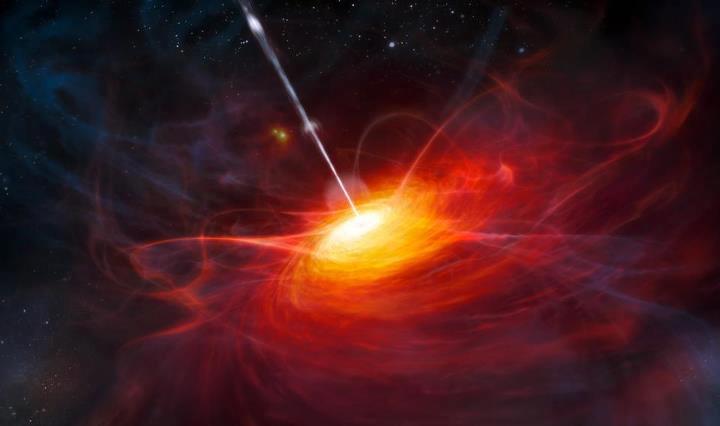

Perhaps one of the most perplexing mysteries in current astrophysics is the science behind Quasars. Quasars, or “quasi-stellar radio sources” are the brightest and most distant star-like objects in the known universe. In fact, they are so bright and they emit so much energy, some of them are believed to be producing 10 to 100 times more energy than the entire Milky Way Galaxy in an area that’s comparable to the size of our solar system.
Since Quasars are so distant (currently, the most distant ones observed are over 10 billion light years from Earth), the only way we can monitor them is by measuring the spectrum of their light. Since they have the largest red shift of any known object in the cosmos due to the effect of the expansion of the universe, astronomers are able to observe their red shift to measure their speed and distance. The greater the red shift, the farther the object is and the faster it is moving away from us. It’s believed that some quasars are traveling through space at 240,000 kilometers per second. That’s nearly 80% of the speed of light!
So, what is a Quasar exactly? Well, we really don’t know at this point. Up until recently, the purpose of these energetic objects were a subject of controversy. Now, it’s generally agreed upon that quasars are produced by supermassive black holes consuming matter (perhaps devouring the equivalent mass of ten suns per year?) in an accretion disk. As the matter spins faster and faster, it heats up. Thus giving off massive amounts of light and other forms of radiation such as x-rays, light rays, gamma rays and radio waves. Since light cannot escape the super massive black holes that are at the center of quasars, the escaping energy is actually generated outside the event horizon by gravitational stresses and immense friction on the incoming material. Quasars are observed so far away, and in relatively young galaxies, it’s believed that they could be the first step in the evolutionary process of a galaxy. Perhaps the supermassive black hole at the center of our galaxy once hosted a quasar?
Quasars sparked a debate amongst the astrophysics community when it was suggested that quasars are distant points in the universe where new matter is entering our universe, which would make them the polar opposite of a black hole. It may be years before we actually know the purpose of these bright, beautiful celestial objects, but they sure are something to look at- sometimes outshining the galaxy they are contained in.